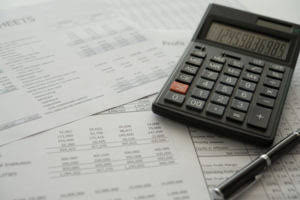ACH return codes: What they mean and how to minimize risk

To back up a little, ACH payments or eChecks are a form of electronic payment that enables merchants and consumers to send funds between one another. ACH payments are regulated by the National Automated Clearing House Association (NACHA), which handles the administration and governance of the ACH network. NACHA is also responsible for the set of rules to be followed anytime an ACH payment fails, otherwise known as an ACH return. This could be due to insufficient funds,wrongly-entered account details, or the customer claims they did not authorize the transaction – to name a few of the most common reasons.

Common ACH Return Codes
- Reducing the risk of returns and fraud starts by following Nacha guidelines and leveraging new technology like instant account verification and IDV.
- You may be able to request a reversal if the withdrawal has already been processed, but it may involve additional steps and fees.
- The customer’s relevant ACH network will then receive an ACH payment request.
- ACH is a convenient, affordable way for consumers and businesses to exchange money.
The National Automated Clearing House Association (Nacha), mandates the use of three return codes which give readers lots of information about what to do next. ACH is a convenient, affordable way for consumers and businesses to exchange money. Similar to other digital transactions, ACH presents a risk of fraud and data breaches that can result in financial losses. Understanding who initiates the code is important due to how long the payment may take to be returned.

Accept ACH payments with Checkout.com

Organizations looking to increase ACH offerings—or those seeing usage rates skyrocket—must take steps to secure their revenue and prevent fraud. The video below explains how businesses are using Signal to move money faster while reducing the risk of ACH fraud and returns. In any case, you can typically resolve issues by coordinating with your customer or the financial institution involved.
R03: No Account/Unable to Locate Account
Through BankersHub, you can learn more about the ACH system with our ACH Certification. We include a valuable module on ACH Exception Item Handling to illuminate what happens if an ACH payment is returned. You’ll learn both originating and receiving side responsibilities and how to manage return disputes and dishonored returns. You’ll also learn best practices, which will both teach you to avoid generating returns and to effectively handle returns timely. Your focused attention will be rewarded with an upskilling, which allows you to lead in your organization. Customer-initiated return codes are sent when the customer takes action to cancel or revoke an ACH transaction from their account.
- This longer time frame gives the originator a chance to ask the receiver to allow the ACH transfer to occur or to provide them with a new bank account number to complete the transaction.
- The originator can send a reversing entry to undo the incorrect transaction.
- Companies selling physical goods or services may deliver purchases in good faith, only to be left unpaid if the ACH transaction is returned.
- Understanding ACH returns, their causes, and how to handle them should keep ACH return-related difficulties to a minimum.
- The entire process is fairly quick and is usually completed within two banking days.
- This could end up with your business taking on bad debt if you are late paying suppliers, for instance.
- Businesses can use these codes to correct the problem by updating account information, contacting the customer, adjusting internal processes, and more.
- For example, if the return code is R08 (payment stopped), contact your client to determine why they issued a stop payment and have them contact their bank to reverse it.
- Let’s go over returns, common return codes, and what to do when you receive one.
- This can help to mitigate transaction failures due to inactive bank accounts or wrongly recorded account details.
- Cancellations are often possible online if completed before batch processing.
An ACH return is generated by a Receiving Depository Financial Institution (RDFI) in response to an ACH transaction that has been initiated but cannot be processed. This occurs for many reasons in fact, there are more than 80 “ACH Return Codes”, and each corresponds to a different reason for the return. In some cases, the RDFI generates a return because the receiving account has insufficient funds to cover the payment, is closed, or does not exist/cannot be located. Here, the balance in the customer’s account is sufficient to cover the payment, but the collected balance is not enough to cover the entry. When an Automatic Clearing House ach return (ACH) transaction like a direct deposit or bill payment cannot be completed, the receiving institution generates a return code and sends it back through the ACH network. ACH return codes are standardized messages that communicate the specific reason for a payment failure, whether it’s insufficient funds, a closed account, an invalid routing number, or another reason.

Settlement for a debit transaction like this typically occurs within one business day once all the banks have resolved at transactions via settlement. ACH payments are a cost-effective alternative to credit card transactions, while opening up your business to the ACH network comprising 130 million US bank accounts. Best of all, Checkout.com makes it easy for your business to start accepting ACH payments. Return codes will rarely give you the full story, which income statement is why they’re only a prompt for further investigation. Keeping lines of communication open with your customers can reduce avoidable ACH returns.
Like any financial tool, ACH withdrawals have strengths and limitations, making them great for some transactions and less so for others. However, this method can incur a charge, so you may wish to set up balance checks only for new customer accounts. Whether or not using a balance check will be cost effective depends on your particular business. They often clue you into the next steps by describing where your issue lies and can be resolved. The reasons can be fairly simple and easy to resolve yourself or a bit more complex, requiring communication with parties involved to verify information and clear up any issues.
FAQs about ACH Returns:
It’s a request for an edit, basically, while an ACH return actually stops a transaction. For instance, the initiator entered an account number incorrectly or the originator’s account contains insufficient funds. ACH returns can also be triggered by a customer informing their bank that the payment was not authorized. Not to be confused with the manual request to cancel a completed transaction called a reversal, the return will arrive because the transaction could not be completed.

What’s the difference between an ACH return and an ACH reversal?
Similar to bounced checks, there are fees and risks involved in ACH returns. For starters, ACH returns typically cost between $2 and $5, depending on the ACH processor. An end user may incur fees from their bank if an ACH transaction is returned due to insufficient funds or results in an overdraft to the bank account. ACH payments are electronic transfers that are regulated by the National Automated Clearing House Association, or NACHA. ACH payments use the bank routing number and customer’s account information to transfer funds between banking institutions. These transactions usually process in one to three business days Bookstime and are often a lower-cost option than credit or debit cards or wire transfers.



